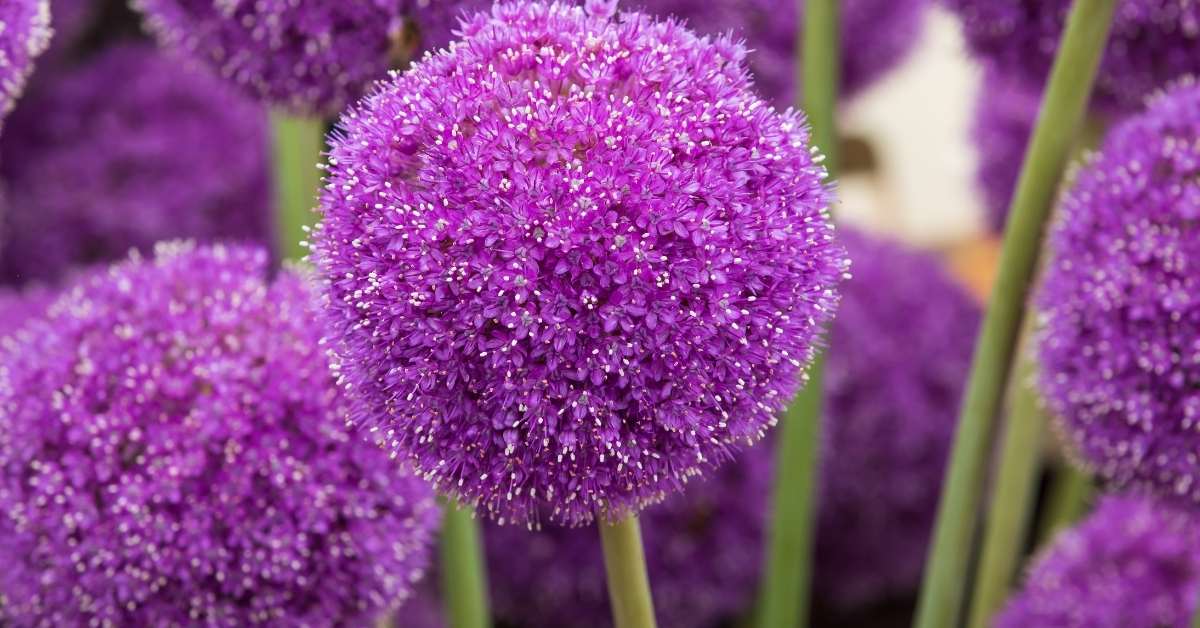In addition to its culinary value, Nasturtium blooms are also regarded for their aesthetic appeal. They are incredibly easy to cultivate and may be left alone for long periods of time and still flourish. As long as they get enough sunlight, they may thrive in any kind of environment. Flowers and seeds from these plants are a popular delicacy for many people.
Here you will find all the details about growing and caring for Nasturtiums (Tropaeolum).
History
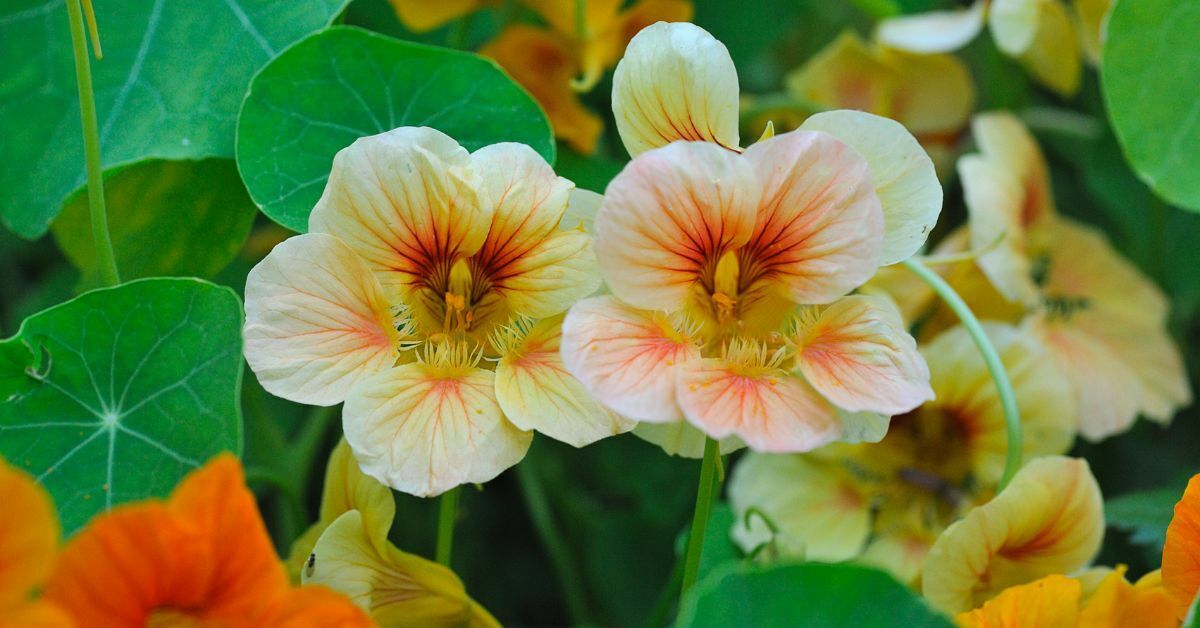
The nasturtium flower is a native of Peru. Spanish conquistadors carried it from Peru to Spain in the first half of the sixteenth century. The nasturtium bloom had made its way to England by the end of the sixteenth century and was now a common sight.
Nasusm and Tortus, the Latin words for “nose” and “twisted,” respectively, inspired the flower’s name. More than 30 nasturtium cultivars were on display at the Paris World Exhibition in 1878.
Nasturtium plants may now be found all over the globe, and the flowers and leaves are widely used as a food flavoring. Caper seeds may often be substituted with these seeds.
Facts about Nasturtium Flowers
The nasturtium flower, like other flowers, has a wide range of colors and tints to choose from. Their pastel hues range from off-white to pale peach, while their more brilliant hues range from sunshine yellow to the most intense of reds.
Many hummingbirds find them irresistible because of their vibrant colors and the nectar they contain. Late in the spring, the buds can be harvested and pickled. For the finest flavor, they should be selected when they are still green. Vitamin C and iron are found in abundance in the nasturtium flower’s blossoms and seeds.
Nasturtium Uses
There are several applications for the nasturtium plant. Again, this is a plant that may be used in a variety of ways. To add a spicy taste to your food, you may utilize the plant’s leaves, blooms, and seeds. Climbing nasturtiums have been produced for medicinal purposes for centuries.
Treating scurvy and a variety of other ailments, these drugs were also used to improve appetites and counteract scurvy’s effects. Vitamin C and iron in the leaves help prevent and treat colds and other ailments, while the leaves themselves can help prevent anemia.
For the most part, cooking with climbing nasturtium is the most common use these days. Watercress may be swapped out for these leaves in a variety of salads and soups. Also, they can be filled and sliced to be used in a wide range of dips and sauces, such as guacamole.
As a garnish and flavoring ingredient, the blossoms can also be stuffed or diced. Pickling nasturtium seeds and using them as a substitute for capers is a great way to save money.
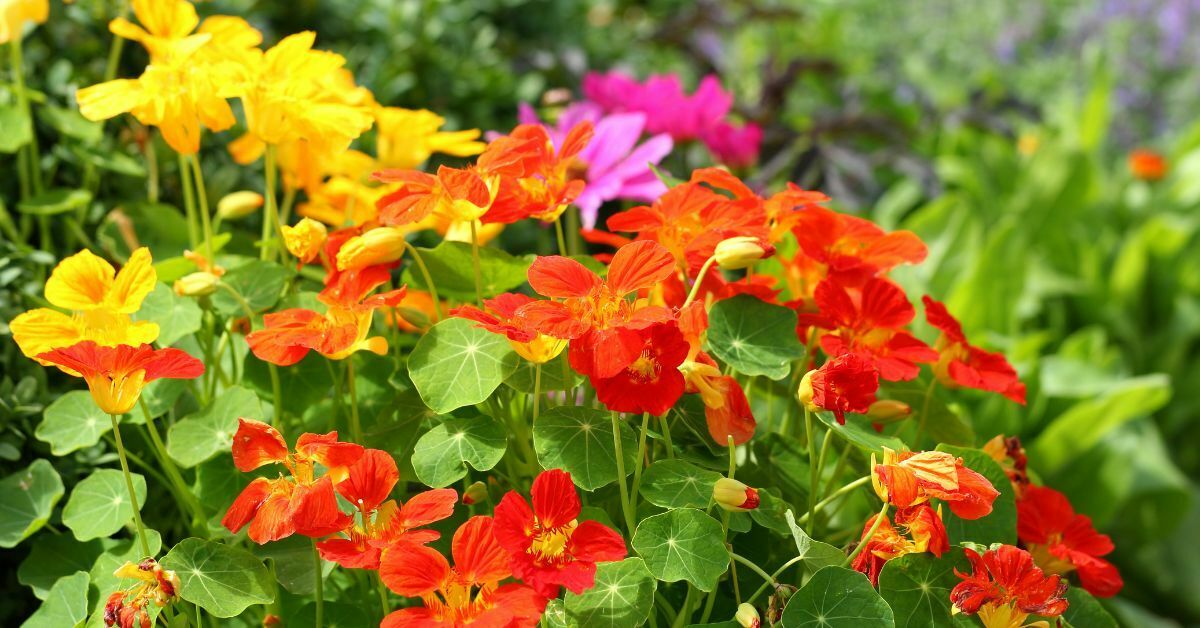
Nasturtium Varieties
Nasturtiums come in a plethora of color and shape variations. Dwarf variants are a lovely alternative for those looking for a climbing plant.
Remember to give them lots of support and train them as they develop so that they can climb trellises and walls. Flowers in flower boxes and hanging baskets on your patio are excellent choices. Just be sure to provide them with plenty of exposure to sunshine, so they may thrive.
Varieties in terms of color can also be quite diverse. Yellow, red, and orange are the most common primary colors, but there are also lovely jewel tones like maroon, scarlet, and others. There are other pastel hues to choose from.
Make a point of selecting a variety of hues when deciding on a type of plant. Colorful hummingbirds are drawn to gardens that have a wide variety of flowers, as well as nectar-rich flowers.
Climbing Nasturtium
For an eye-catching display on your fence or trellis, you can’t go wrong with the climbing variety of Nasturtium. For this reason, it’s essential that you supply them with a means of assistance.
Tom Thumb, yellow lark’s heels, dwarf, and little nasturtium are some common names for climbing nasturtium. These aren’t your typical garden plants, but they’ll spread out and climb a variety of buildings to provide a burst of color to your outdoor space.
Heights of Climbing Nasturtium
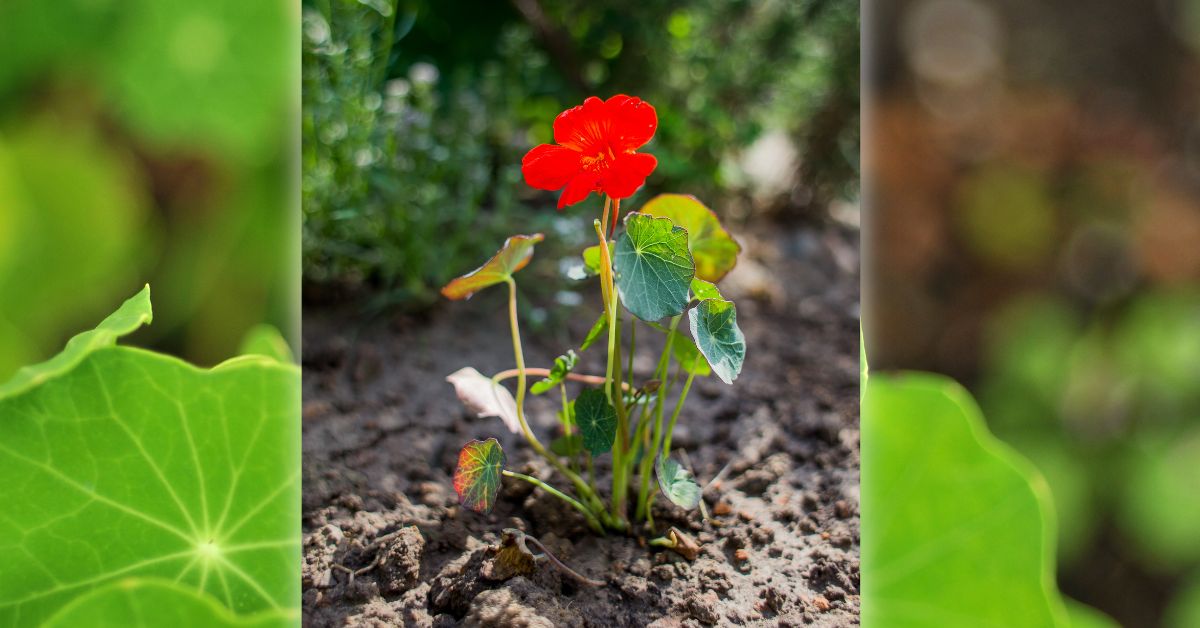
Annual Nasturtiums are those that don’t climb, whereas perennial Nasturtiums are those that do. Many of the climbing species thrive in colder areas and may reach heights of up to 10 feet. As a native of the tropics and subtropics, the climbing nasturtium may be found across the United States in a wide variety of temperatures and habitats.
Because of their adaptability and ability to thrive in even the most neglected regions, they are an excellent choice for both hanging baskets and summer gardening, as well as rock gardens. Different kinds and types of soil create long-stemmed leaves of varying sizes.
Plants located in more humid environments generate more leaves than flowers. Plant them in good soil and water them frequently if you prefer the leaves to the blossoms. Fertilizer and watering should be limited to once a week for those who desire colorful flowers.
All nasturtium species attract hummingbirds because of their nectar and brilliant colors. During the winter months, you may grow potted climbing nasturtium indoors to enjoy the plant’s vibrant blossoms, thick leaves, and peppery flavor.
Nasturtium Capers
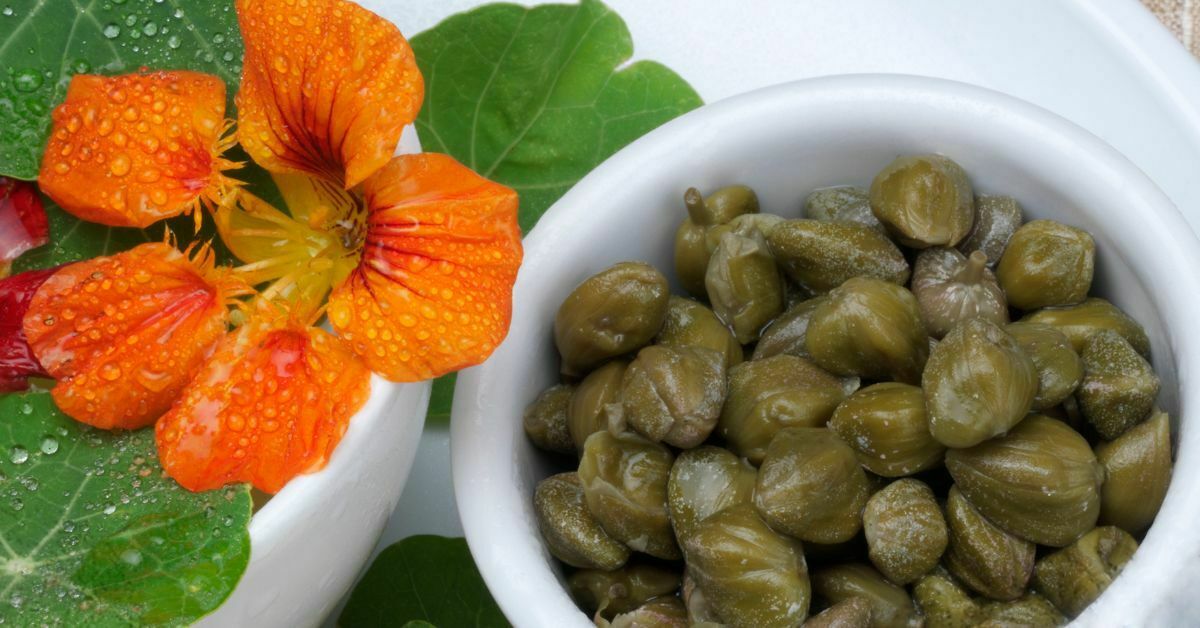
Nasturtiums are peppery, spicy-tasting food plants. Capers made from the seed of the nasturtium plant may be found in supermarkets for a fraction of the price of conventional ones. Adding them to pizzas, salads, and spaghetti is a great way to add a little heat to your meal.
Making your own capers from nasturtium seeds is a simple and quick process, and the plants are cheap and easy to cultivate, so you may have as many as you like.
Nasturtium Jewel
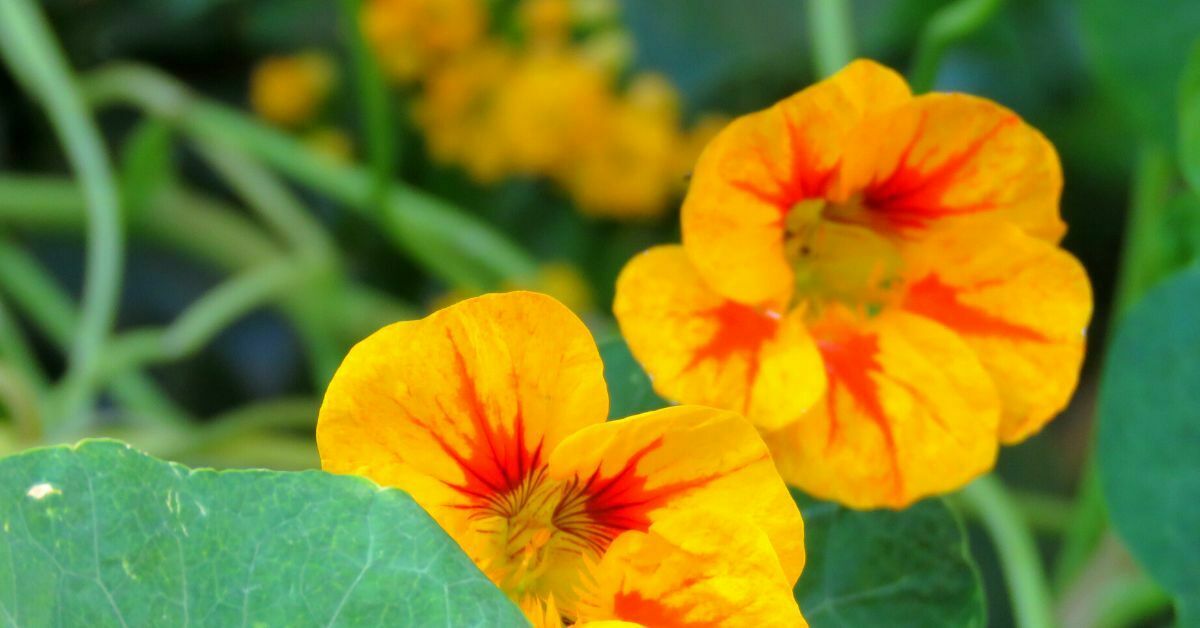
Climbing Nasturtium jewel gives a stunning display of brightly colored blossoms and lush foliage. The plants may readily reach heights of up to eight feet. The colors available in the summer include yellow, orange, maroon, and cream, as well as peach, scarlet, apricot, and other tones.
The name comes from the resemblance of the hues to diamonds. nasturtium leaves are big and marbled with white on the nasturtium gem. It is possible to eat both the leaves and the flowers of the plant, which both have a spicy flavor.
Today, they may be found in a variety of settings, including herb gardens and as edging. Flowers of the climbing variety can be used to decorate trellises and lower fences in gardens.
Nasturtium Aquaticum
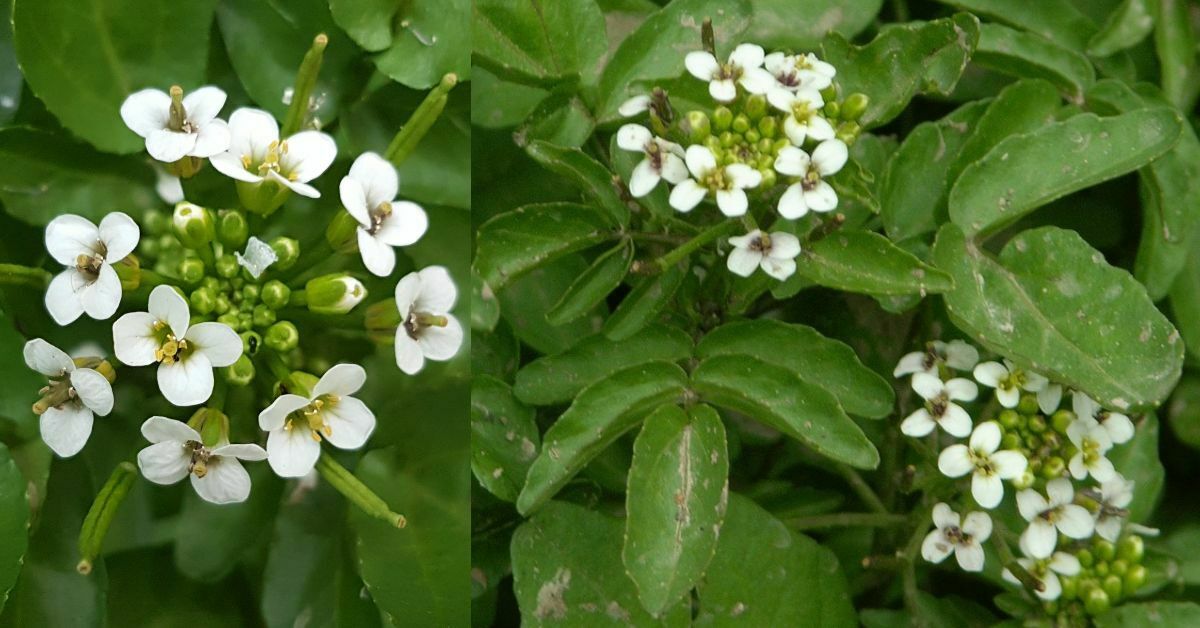
There are several places around the globe where Nasturtium Aquaticum is cultivated. The plant is edible. The plant’s fruit, flowers, leaves, and seeds all fall under this category. Because of its rapid growth and low maintenance requirements, it is an ideal houseplant for apartment dwellers.
When it comes to cabbages, nasturtium is a relative of the mustard and the garden cress species. Peppery and spicy flavors may be found in both the flowers and foliage.
Nasturtium Tropaeolum
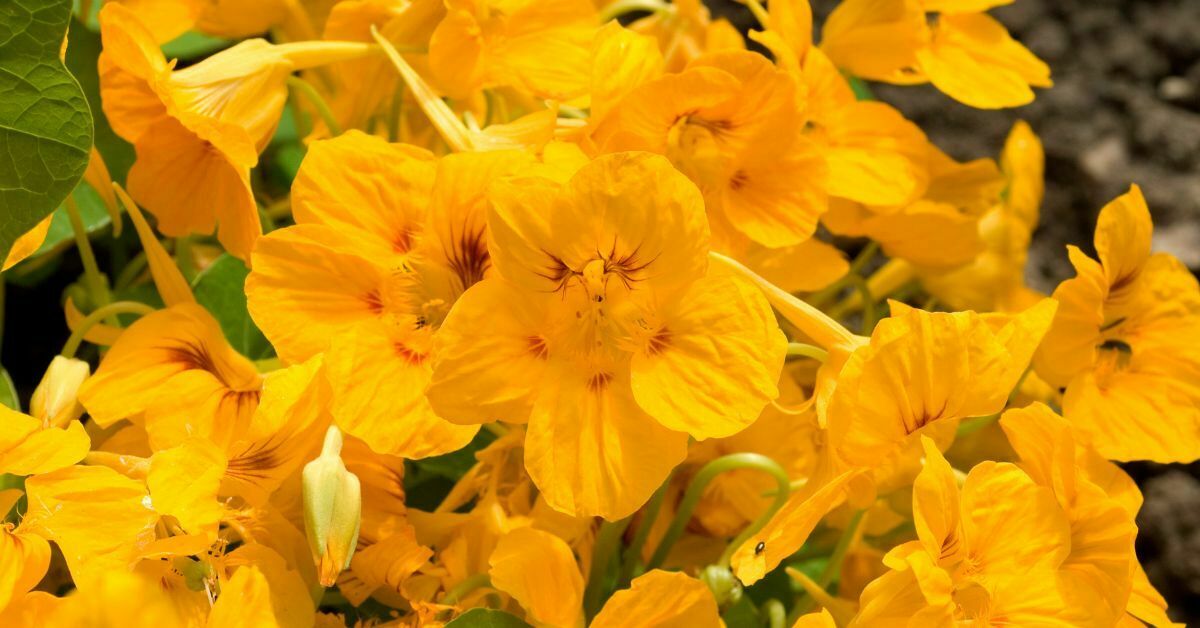
Nasturtium Tropaeolum is the botanical name for a variety of plants with brightly-colored blooms and lush, dark leaves. The plants, which range in size from dwarf to climbing kinds, are fully edible. Although they are native to hotter regions, they can now be cultivated almost anywhere.
In both their usage and their growth, these plants are extremely adaptable and require minimal care and attention to thrive. A number of dishes may be made with the leaves and blossoms of nasturtium Tropaeolum.
They have a mild peppery flavor that goes well with pasta, salads, and a variety of other foods. As an alternative to capers, pickled nasturtium seeds can be eaten.
Pickling Seeds
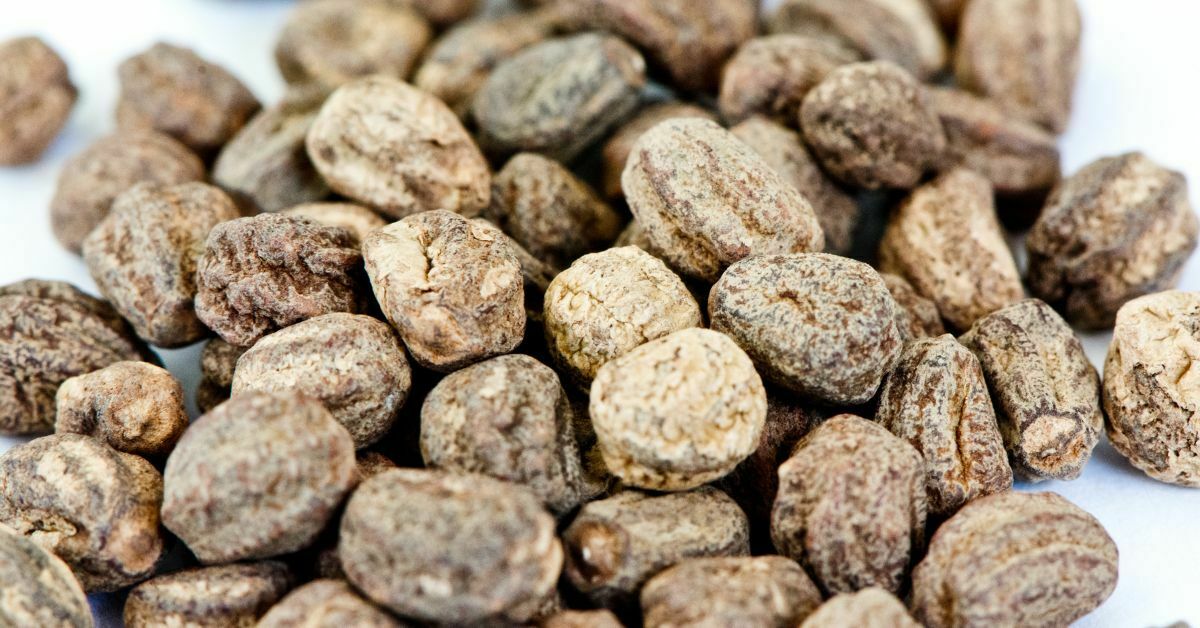
Vitamin C and iron-rich nasturtium seeds can be added to salads and other healthy dishes. Seeds should be collected when still green and fresh for pickling. Grab a handful and soak in cold water with a pinch of salt for a few minutes. Rinse and re-soak in cold water for an extra day after the second soak.
To preserve the seeds, drain them and put them in a glass jar. Then, fill the container to the brim with hot vinegar. It will only take you a few days to preserve the seeds, and then you can enjoy them on everything from salad to pizza to cream cheese-topped bagels with smoked salmon.
There are numerous recipes that call for these tasty seeds, or you can just add them to your favorite meal and create your own unique recipe.
Growing And Caring For Nasturtiums (Tropaeolum)
| APR | MAY | JUN | JULY | AUG | SEP | OCT | NOV | |
| Sowing time | ✔ | ✔ | ✔ | ✔ | ||||
| Planting time | ✔ | ✔ | ✔ | ✔ | ||||
| Flowering | ✔ | ✔ | ✔ | ✔ | ✔ | |||
| Collect seeds | ✔ | ✔ | ✔ | |||||
| Best condition | ✔ | ✔ | ✔ |
Best Soil for Growing
Nasturtiums don’t require very rich soil to thrive. They really favor arid, sparsely fertilized soil. There is no need to use compost, fertilizer, or mulch to help them grow since they do well on their own.
Because of their peppery leaves, they make ideal companions for other plants, and they will assist in deterring cucumber insects and squash vine borers. From the seeds to the leaves and blossoms, the plant’s spicy taste may be added to practically any recipe.
Planting Nasturtium Seeds
It’s important to remember that you should space your nasturtium seeds at least ten inches apart if you’re going to start your own nasturtium garden with them. When planting, you should plant them approximately an inch below the soil’s surface.
A great flower for novice gardeners and youngsters, nasturtiums are easy to cultivate and require little attention. Prior to planting, there are no soil preparations required. It’s as simple as pushing the seeds into the soil and making sure they’re at least half an inch below the surface.
They should begin to sprout within a week or so of planting. In terms of color, the blossoms come in a wide array of shades, ranging from creamy white and pastel pink to fiery orange and red. If you want them to develop well, place them in a spot with adequate drainage and plenty of sunlight.
Growing and caring for nasturtiums
Nasturtiums can be planted anytime between early spring and mid-spring, depending on where you live. The seeds for nasturtium flowers should be sown at least ten to fifteen inches apart and no less than one inch deep. Water the seeds rapidly after covering them with earth and then leave them alone.
They should not be watered for the following 10 days. These flowers germinate quickly so that you may plant them right away. Although they may be grown in almost any soil condition, it is best to choose a location that receives full sunshine and has enough drainage, but they can be grown anywhere.
Growing in Pots
It is possible to cultivate the nasturtium plant in a container as well. When planting your seeds, make sure to use soil that has been ignored for a while. Weekly watering is all they need. It’s a good idea to choose dwarf cultivars for potting and decorating patios and other outdoor places.
If you have a lot of sunshine in the region where you want to grow climbing kinds, you may use them in your garden trellises and walls or along your backyard fence. On your patio or porch, you may hang the cascading variety from hanging baskets.
Caring for Nasturtium Flowers
Nasturtium blossoms may be picked at any time of year. When you pluck them, you extend their blooming duration even further. Early spring to late fall is the traditional blooming period for these plants, and they also self-seed.
The use of fertilizer is discouraged while caring for nasturtiums. Choosing a wide range may also assist you in terms of maintenance. The Peach Melba variety is a better choice for a flowerbox than the Alaska Series, which is more of a bushy type. The vine species Canary Creeper is ideal for individuals who want to grow Nasturtiums on a trellis and use it to climb.
How to Harvest
The flowers of the nasturtium plant are edible and should be plucked as soon as many leaves have formed. When gathered early, they are substantially more flavorful. The peppery flavor of nasturtium blossoms is derived from their close relation to the cress family.
Even the blooms have a peppery flavor, but they aren’t quite as potent. The seeds are also edible, and many people like pickling and using them as a substitute for capers. Harvesting these plants before the first frost in your region is recommended because they are frost-sensitive.
During the first frost of the season, if you’re still receiving blossoms, simply cover them like you would any other plant.
Nasturtium Pests and Diseases
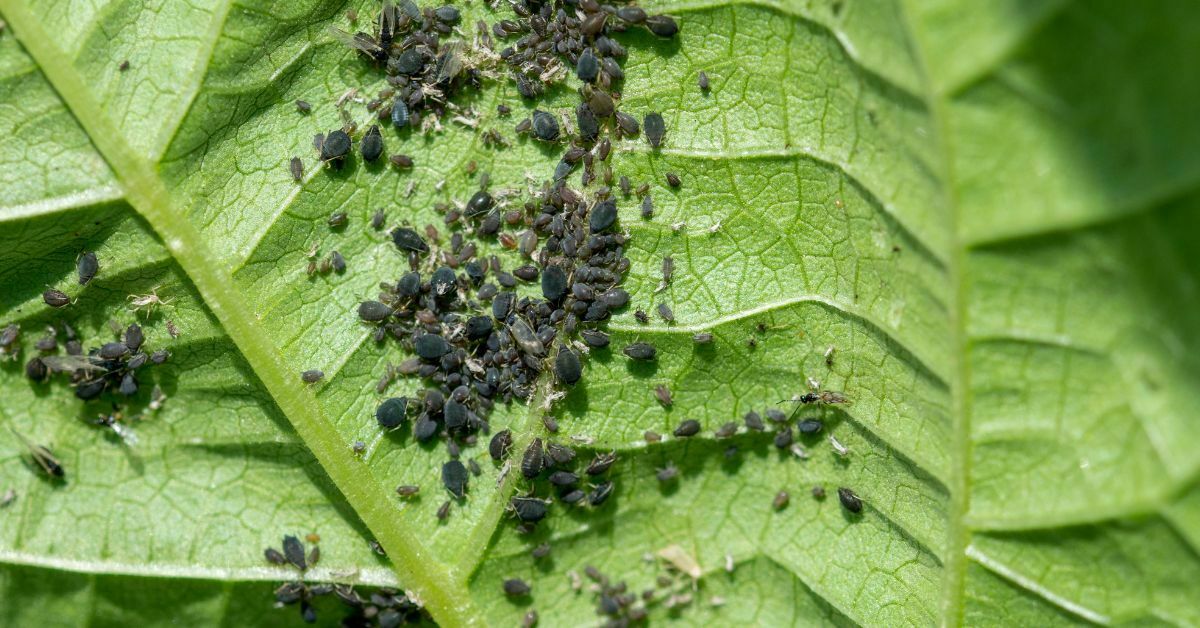
- Invertebrates
- Twospotted spider mite
- Green peach aphid
- Melon aphid
- Whiteflies
- Imported cabbageworm
- Giant whitefly
- Foliage-feeding caterpillars
- Leafhoppers
- AphidsBlack bean aphid
- Spider mites
- Greenhouse whitefly
- Greenhouse leaftier (udea rubigalis)
Diseases
- Clubroot
- Nutrient disorders
- Nasturtium mosaic virus
- Tomato spotted wilt virus
- Fasciation
- Viruses
- Water excess or deficiency
- Environmental disorders
- Cucumber mosaic virus
- Aster yellows
- Turnip mosaic virus
- Weeds
- Vertebrates
Wilt, Pseudomonas solanacearum.
Infected plants become yellow and wilt before dying. When sliced, stems may exude a bacterial slime from the cut ends if they have developed black streaks. Affected plants may perish before they are able to blossom. Nasturtiums can be infected by the bacteria that live in plant detritus in the soil and spread through their roots.
Bacterial leaf spot, Pseudomonas sp.
The leaves develop little brown to black markings. It’s possible that the edges are drenched with water.
Nasturtium Insect Problems:
Western black flea beetle, Phyllotreta pusilla.
The little black beetles produce small holes in the leaves and jump when disturbed. Pesticides like as acephate or carbaryl, administered as foliar sprays, are permitted for use in Connecticut. See the labels for dosage rates and safety concerns.
Bean aphid, Aphis fabae.
Nasturtium plants are regularly infested by this aphid. Acephate or insecticidal soap, which may be sprayed on the insects, is one of the substances approved for the management of this pest in Connecticut.
Cabbage looper, Trichoplusia ni.
This caterpillar eats leaves and crawls with a hunch or a loop on its back. It’s bright green with white and darker green stripes running lengthwise. Its body is practically smooth, and its head is the thinnest. The adult is a grayish-brown moth with a little silvery mark in the center of each forewing that resembles a figure eight.
Corn earworm, Helicoverpa zea.
The moth’s wingspan is around 1.5 inches. “It has a brown color with darker spots. They migrate to Connecticut from southern locations each season, when they lay their eggs one at a time on leaves. Following their hatching, the caterpillars eat and grow until they are about 2 inches long “.
With light and dark stripes along the length of their bodies, they can be any hue from chocolate brown to tan to green to rosy pink.
Serpentine leafminer, Liriomyza pusilla.
The nasturtium leaf is home to a serpentine tunnel dug by the fly larva. There have been reports of the turnip and columbine leafminers occasionally infesting nasturtiums. Most of the time, no control is required.
Most common problem:
It’s a fantastic companion and deterrent for aphid-infested veggies because nasturtiums are prone to this problem. Aphids may be to blame if your plant’s leaf seems crinkled or otherwise sickly. To get rid of the pests, use a powerful stream of water from your garden hose to douse them.
Diluted vinegar or essential oils like lavender and peppermint can also be used to make a non-toxic spray. As a last resort put catnip alongside the plants to fend off any potential pests entirely.
Under the wrong circumstances, this plant might develop bacterial leaf spots. If this is the case, little brown or black patches will appear on the leaves. As this disease spreads by splashing water, it may be minimized or prevented by providing adequate circulation between plants and using drip irrigation instead of sprinklers.
Other Points to Consider
Flowers of Nasturtium are widely regarded as companion plants. All of your plants will benefit from the peppery flavor of their leaves, which deters insects. There are various dishes that use the leaves, blossoms, and even the seeds of these flowers. First-time gardeners, as well as youngsters, will appreciate how simple it is to grow these plants.
Where to Find and Purchase Edible Nasturtium
Most gardening centers don’t carry Nasturtium plants. You’ll get the best results if you buy the seeds and plant them yourself. You may find nasturtium seeds at numerous garden centers, or you can search online for them at other shops.
If you’re lucky enough to come across plants for sale, you’ll be able to get them for less than $5 each. For less than $5 a pack, you can get numerous huge seeds, and each pack contains a few smaller ones. Growing nasturtiums is quick and easy, and you’ll have enough plants to feed your family and friends, as well as your neighbors and friends’ families.
Nasturtium Recipes
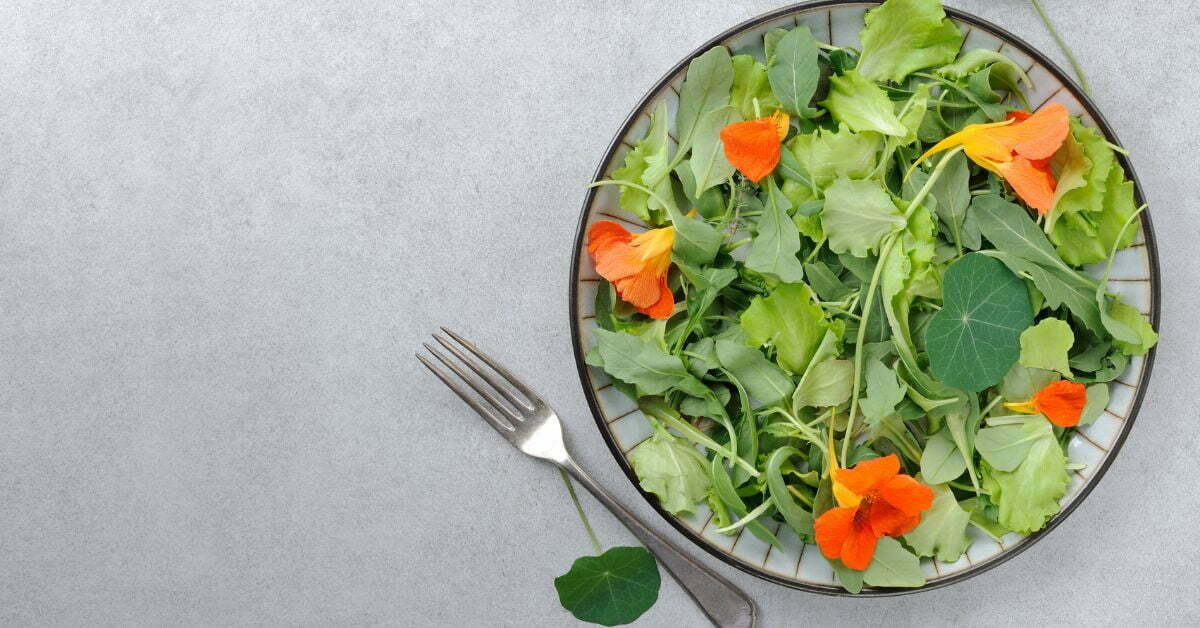
Cooking with the Leaves
Nasturtium leaves can be used in cooking to offer a spicy and well-rounded taste to foods. Butter spreads and pesto may be made from the leaves, and they can even be packed like grape leaves for a flavorful appetizer. About 25 leaves can be stuffed with this recipe’s contents.
Simply wash and dry nasturtium leaves, and add 1 tbsp. olive oil and 1 tbsp. lemon juice to prepare this dish. Short-grain rice and currants, and pine nuts are also included in the filling, along with spices such as cinnamon and dried mint.
Salt and pepper are also used to season the filling before baking. To make the filling, just saute the onion in a little oil until soft, then add the remaining ingredients and heat through. The filling mixture is then packed into the lettuce leaves.
Add the packed nasturtium leaves to a saucepan with lemon juice and olive oil. Make sure there is enough boiling water to submerge the leaves before cooking for around an hour completely.
Nasturtium Salad with Spinach Leaves
The leaves of spinach are one of the ingredients of a popular nasturtium salad. Due to the abundance of vitamins and minerals that spinach leaves contain, they make an excellent substitute for ordinary lettuce when used in salads.
In addition to iron, vitamin A and vitamin C, nasturtium is packed with a plethora of other essential components. In order to prepare a salad with nasturtiums and spinach, you will need eight cups of spinach leaves and two cups of nasturtium blooms and leaves.
Because the leaves are very large, you might want to break them up into smaller pieces before using them in salads. To sweeten the tangy dressing made from olive oil and a drop or two of balsamic vinegar, stir in two teaspoons’ worth of honey to the salad.
Additional taste can be achieved by using ingredients such as chives, feta cheese, and seedless red grapes in the dish. To serve immediately, combine all of the ingredients in a single bowl and mix them together.
Nasturtium Caper Recipe
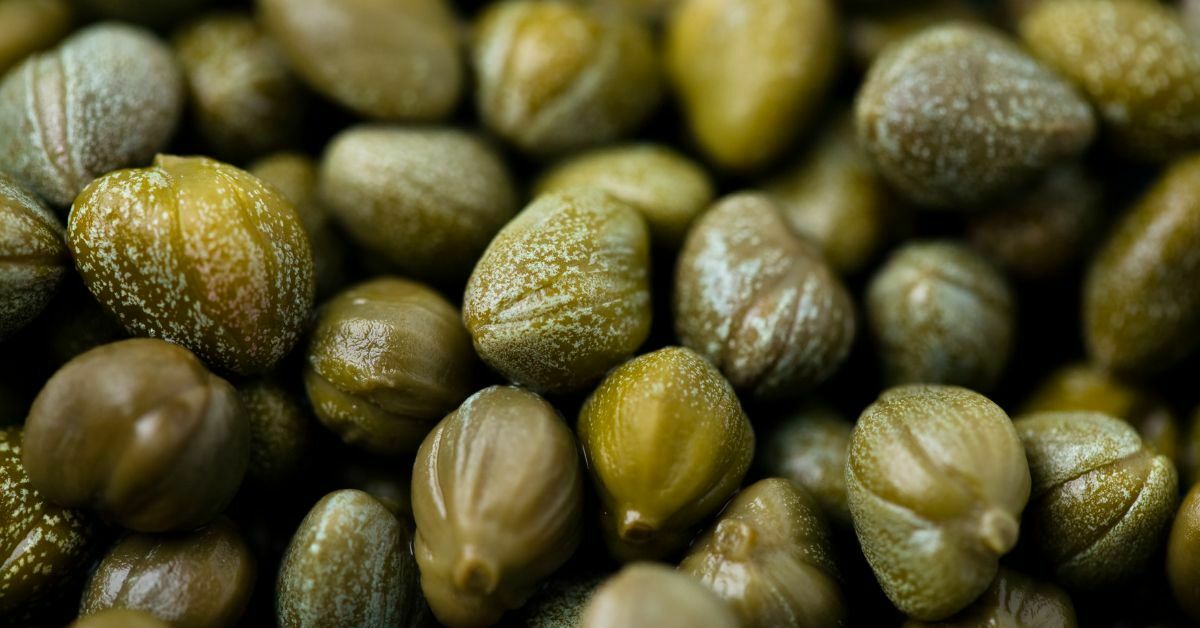
Your nasturtium capers will be ready and ready to eat in approximately twenty minutes. Nasturtium seeds need to be picked when they are still green and solid, so be sure to do so.
However, you’ll need around a cup of seeds, a cup of white wine vinegar, a teaspoon of salt, and a few gently crushed peppercorns for taste. To clean the seeds, run them under water and pat them dry with paper towels.
Once the seeds have been drained, put them in a pint-sized canning jar with the rest of the ingredients. A few weeks later, just close the container and store it in the refrigerator so the flavors may meld. You can make a whole pint of capers from this simple method for very little money and time, and you can use them in all your favorite dishes.
A unique taste combination may be achieved by introducing other seasonings like celery seed, bay leaf, or a clove of garlic.
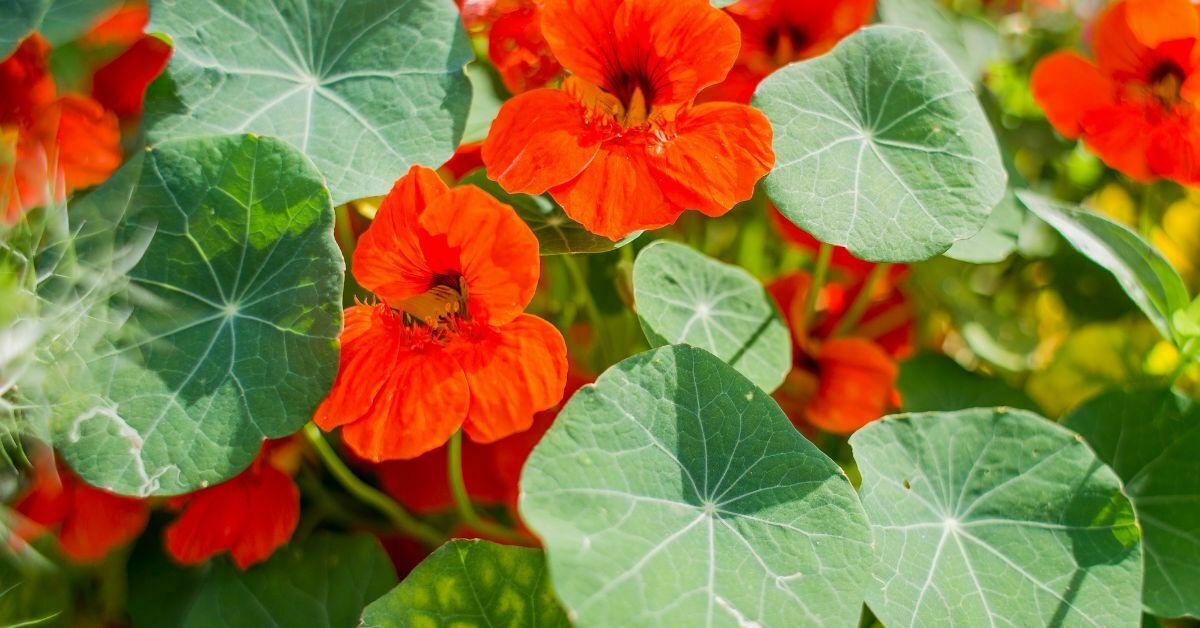
FAQ – Nasturtiums
Is it easy to grow Nasturtium?
There are few flowers as easy to cultivate as nasturtiums. Nasturtiums will flourish if you simply plant them and then leave them alone. In order to keep them healthy, you’ll need to provide them with a position that gets a lot of sunshine and avoid over-watering them. Children and novice gardeners alike will find them simple to use.
Are Nasturtiums Prone to Insect Damage?
Pesticides should not be used on nasturtiums since they are edible, and nasturtiums are prone to aphids. While they may be cleaned with mild soap and warm water, they should still be thoroughly rinsed before they’re put to use.
What Type of Soil Do I Need for Growing Nasturtium?
Dry soil is preferable. They flourish in semi-neglected environments.
Are There Any Edible Parts of the Nasturtiums?
All parts of the plant can be eaten. The spicy flavor of nasturtium leaves and flowers may be used in a wide range of cuisines. After the blossoms have faded, the seeds can be preserved and used as a replacement for capers in a variety of dishes.
When I use them in a recipe, what are the possibilities?
You may use nasturtiums in any dish to enhance the flavor. Soups, salads, dips, spreads, and pasta sauces are just a few of the many dishes that use them. The many components of the plant may be found in many recipes online, or you can simply add them to your favorite dish and make it your own.
Where Can I Purchase Nasturtiums?
The seeds and smaller plants of nasturtium may be found in a number of online and offline gardening outlets. Plants and seeds may be purchased for very little money.
A package of 25 seeds normally costs less than a buck at most seed shops. Plants often cost little more than $5 each. If your local garden shop does not carry them, you can always look them up online.
More information on the seeds and where to find and buy them may be found on a variety of gardening websites.
What Color Varieties Are There?
A wide range of hues and pastels may be found in the nasturtium family. Flowers in red, yellow, and orange are the most common, with bluish-green foliage rounding out the palette. Some additional hues may be had, such as red, maroon, peach, and a slew of other lovely hues as well.
Conclusion
It’s not difficult to cultivate your own nasturtiums. Take advantage of these nasturtium flowers FAQs to help you get started, and then begin to enjoy your own vibrant wealth of color throughout your yard. Make sure to search up a few recipes before harvesting your plants so that you can appreciate the spicy flavor of the plant.
